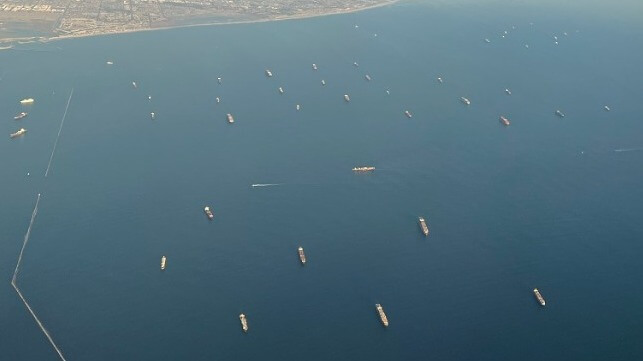IAPH: Pandemic Revealed Three Key Gaps in Seaport Development

The International Association of Ports and Harbors (IAPH) has published a report highlighting gaps to be addressed in the ports sector as the world springs back from the pandemic.
The report is a result of the last nine months’ interaction between IAPH and its members, together with other stakeholders.
“Back in 2021, IAPH concurred that ports were not prepared for the pandemic-affected, extreme swings in demand and their impact on the maritime chain. This was particularly due to long-term under-investment in port and port-related infrastructure. So we took the decision to define and identify, on a global level, the principal infrastructure gaps and envisage a concrete plan,” said Dr. Patrick Verhoeven, IAPH Managing Director.
The report identifies three key gaps that need priority attention in the ports sector.
First is the digitalization process to improve the competitiveness of both the maritime and landside logistics supply chains. While the pandemic has resulted in the awareness of a greater need to accelerate digitization through the global supply chain, numerous barriers abound.
As digitalization advances in the ports sector, human interactions have slowed down, exposing difficulties in achieving genuine data collaboration. This is due to gaps in governance, global data standards adoption, low willingness to share data due to vested interests and lack of data transparency between public and private entities.
IAPH proposes that port authorities should act as ombudsmen between various stakeholders to encourage data collaboration. This could be through adoption of a maritime single window and unifying port stakeholders’ interests in sharing nautical, administrative and operational data to reduce inefficiencies - ultimately reducing vessel berth idle time.
Reducing emissions
The second gap is on ports decarbonization. With impacts of climate change weighing on supply chain resilience, the pressure regulators are placing on ports to decarbonize is escalating.
However, this puts ports in a prime position as potential energy hubs. The challenge lies in closing the economic gap in production costs between the new and old fuels.
To close the gap, selected ports with potential for green solar and wind energy generation could take up the opportunity to become energy hubs for manufacturing, land-based transportation modes and local population energy supply.
Resilience
The third key gap to close is on improving ports resilience. One of the main consequences of the Covid-19 pandemic has been the exposure of the limited infrastructure capacity to absorb and respond to shocks in demand and supply.
The challenge has also been exacerbated by overreliance on trucking versus other intermodal transportation, which impacts supply chain fluidity. Thus, IAPH believes ports should make further improvements to persuade cargo owners to switch modes.
In addition, to resolve the challenge of ports congestion, ports should revise their land investment portfolios and partner with investors to create new inland container depots and cross-dock facilities.

that matters most
Get the latest maritime news delivered to your inbox daily.
Most importantly, human capital is a critical factor in closing the gaps in ports resilience. Transforming ports from landlords to potential orchestrators of supply chain fluidity and decarbonized energy hubs will require substantial changes in the way ports are governed and the management profiles to lead them.
“Ports will only succeed in the process of closing the gaps by attracting young and diverse talent into the industry,” noted IAPH.
